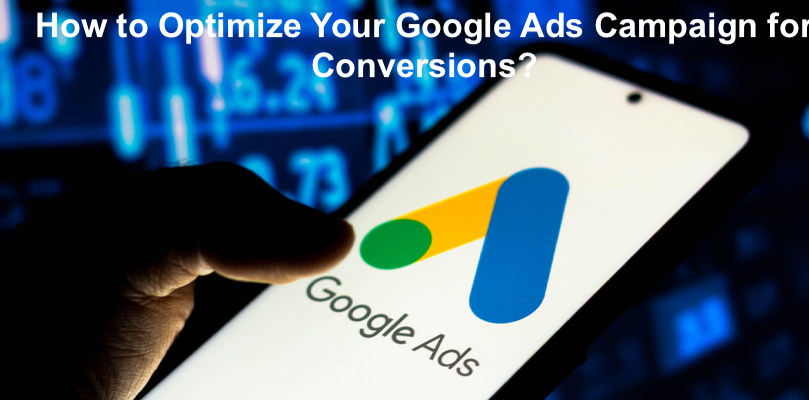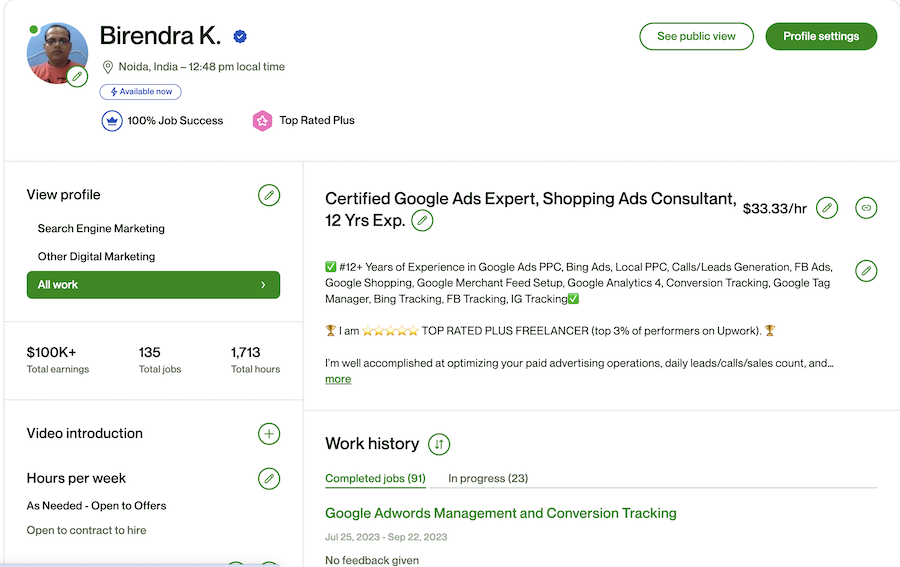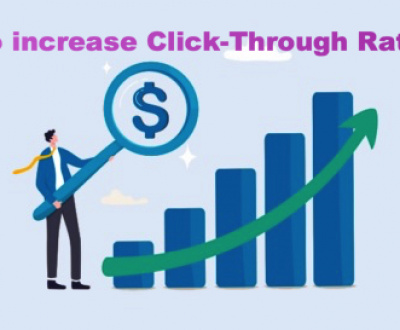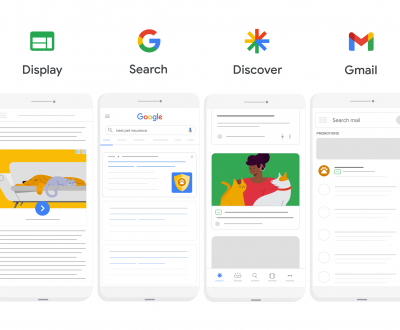Google Ads campaign is deemed a success only when it yields conversions. Digital marketers are always on their toes to find ways to extract the best ROI from the Google Ads campaign. One of the key strategies to ensure conversions is to optimize the Ads campaign so that the campaign has all the features that contribute to its success. Let’s take a look at the best optimization strategies that can help achieve the desirable conversions.

1. Focus on returns-focused metrics
When a certain budget is assigned to the Ads campaign, the businesses expect the investment to yield an increase in sales. Thus, the metrics like cost per click (CPC) or click-through-rate (CTR) alone are not enough. The Google Ads manager should also take into account other metrics like RoAS (Return on Ad Spend), Cost per Acquisition (CPA), Quality score and conversion rate.

Metrics study is very much important for understanding the performance of the campaign. So, it is always advisable to keep an eye on the data provided by HubSpot, Google Analytics or Shopify. By linking the numbers to the data generated by these sources, the Ads manager can get the true picture of the campaign. So, the first strategy is to think of relevant metrics that talk conversions and then link them to the data providers to understand the connection and be prepared for the next campaign as well.
2. Perform A/B testing on automated bids
To pick the type of automated bid that works, you need to analyze the data from the last fortnight. For that the first requirement is to have ample data in hand. Just having less than 20-25 conversions may not help paint the correct picture. So, wait and watch and conduct the performance analysis when you have got good numbers.
The A/B test is to be conducted on campaign with manual bidding and the other one with automated bidding. This testing should be a month-long process so that the algorithm has got enough fodder to work upon and optimize the bids.
You must know that the main deliverables of the automated bids are:
- Enhanced conversion value: The campaign is focused on a particular order value group
- Increased conversions: The campaign is designed to achieve certain number of conversions and above
- Focus on Return on Ad Spend: This ad strategy is meant to maximize revenues while keeping in focus a threshold return per unit of dollar spent on the campaign.
- Focus on cost per acquisition: While designing an ad campaign, the marketers need to have in mind the cost per acquisition to be achieved. It helps budget the marketing campaign in a realistic manner.
These parameters are achieved by both the manual and automated bidding styles. The optimization involves picking of the style that helps achieve the abovesaid objectives.
How to set up Create an A/B test in Google ads?
To set up an A/B test in Google Ads, you’ll need to follow these steps:
- Sign in to your Google Ads account.
- Create a new campaign or select an existing campaign that you want to test.
- Choose the ad group that you want to create your A/B test in.
- Create two or more ads that you want to test. You can create variations of headlines, descriptions, and display URLs.
- Once you’ve created your ads, click on the “Ad variations” button in the ad group you’ve selected.
- Select “Create new variation” and choose the ad elements you want to test, such as headlines or descriptions.
- Make the changes you want to test in the new variation, then save it.
- Set the percentage of traffic you want to direct to each ad variation. For example, you could direct 50% of traffic to one ad and 50% to the other.
- Launch your A/B test and monitor the performance of your ads. You can view metrics such as clicks, impressions, and conversions for each ad variation.
- After your A/B test has run for a sufficient amount of time, analyze the results and determine which ad variation performed better. Based on the results, you can adjust your ad strategy and make changes to improve the performance of your campaigns.
Keep in mind that A/B testing requires a certain level of statistical significance to ensure that the results are reliable. Make sure you test your ads for long enough to get accurate results.
3. Conduct site link check regularly and update it as needed
As a Google Ads specialist, primary motive is to bring traffic to the website. That’s why, ad copy is designed such that the link added to the copy takes the visitor to the correct page that displays relevant information or offers a desirable action to take. But the relevance is not a constant feature, it may dilute with the time. Therefore, the marketer should make it a point to review the website regularly. On inspection, it is quite likely that the site link directs the visitor to an obsolete page or to the page that does not exist. It speaks bad about the brand image and also may hit the Ad campaign badly.
So, it is necessary to update the site links regularly so that the website can cash the position and the traffic. Some of the actions to take while doing the site check are:
- Review and emphasize the pages where you want the traffic to land: Mostly the traffic is desirable on the product page where the customer can see the product and make an online purchase. Or, it can be contacts page that can help speed up the communication. Also, the focus of review can be the landing page which is to be revised, if needed, to ensure, correctness and relevance of information served.
- Check and update site links: All site links added in the ad copy should be checked for relevance. If the site links are not taking the visitor to correct information, these should be updated with the fresher and more meaningful ones.
- Test the performance: When you have added the new site link or updated the existing one, you need to test and review the performance as a part of optimization process. The metrics like conversion rate and RoAS or Cost per acquisition should be evaluated to know the performance of the site links.
4. Refine the ad copy
An ad copy is said to be effective when it drives an action from the viewer. Thus, the Google Ads Campaign manager need to work on the ad copies’ elements regularly. It requires study of data pertaining to the ad copies. The information about the parts that speak to the reader help create better and result-oriented ad copies. Some of the ways by which you can enhance the impact of the ad copy are:
- Experiment with various headlines: Change the headline using the trending keywords or the ones you want to target and gauge its performance. Keep working on variations till you find the one that is impactful and generates a better response.
- Go for unique headlines and descriptions: Let your real you do all the talking while writing the headlines and descriptions. You must tweak good quality headlines and descriptions in the ads campaign to stand out among the competitor and to be close to the user expectations. Keep in consideration the brand voice and personality while designing headlines and descriptions to achieve better memory recall.
- Try different pinning variants: Use both pinning and without pinning approach to get an idea about an effective position that works while creating RSAs. It allows to have better performance from the ad copy and control its working.
5. Analyze and improve impression-to-conversion rate
Impression-to-conversion rate is a better and more inclusive metric than the conversion rate and click-through rate. It is a custom metric that can be made to achieve the ad campaign’s objectives. Here is how you can create an impression-to-conversion rate metric:
- Go to Campaigns in your Google Ads account
- Click Modify Buttons in the Columns
- Reach Custom Columns and click +New
- Create Impression to Conversion Rate by naming +New custom column with this
- Select Formula box
- In the formula box, input Conversions / Impressions * 100
- Pick the relevant data type and formatting styles
- Save the custom Column.
- Refer to it to find the impression to conversion rate for preferred ad groups or campaigns.
The performance of the ITC rate is dependent on targeting positions, contents of ad copy and position of the ad. So, you need to optimize these parameters often to meet the ITC rate targets.
6. Make a combination of various campaign types
The audience is not the only those who visit your website. There are several platforms used by the audiences. The target audience may be consuming videos similar to your content at YouTube, or they may be surfing the internet and visiting websites that have similar business as yours. There are different types of campaigns designed based on the target platform.
So, if you want to exceed the scope of the Google Ads campaign, you can design multiple ads campaign such as YouTube campaign, Performance Max campaign or Display campaign and expand the reach or generate more numbers.
7. Use phrases which are used as search phrase in the landing page and ad copy
Google Ads campaign optimization delivers better results when you have adopted a personalized approach, the report says that more than 70% customers like to be served in a personalized manner.
When you have cracked the search phrase which is used more commonly, you have opened the pathway to attaining better quality score. The audience find you more relevant and trustworthy and believe that their problems will find the best solution with you. Thus, by using the most-used key phrases, which you can find easily from the keyword planner or hire keyword research specialist, you can enjoy benefits like better clickthrough rate, low bounce rate and consequently, more conversions.
8. Include negative keywords
If your brand appears in searches which are not relevant to you, it simply means wastage of Ads budget. Thus, by adding negative keywords, you actually save your brand image and also the budget. The use of negative keywords ensures that your message reaches only the intended audience that is genuinely interested in your offering.
Competitor name can be a negative keyword for a generic campaign. You want to get noticed as compared to your competitor, and so, checking and updating the negative keywords list regularly is quite important for the campaign’s success.
How to add individual negative keywords to ad groups or campaigns?
- Select Keywords and Targeting > Keywords, Negative.
- Click Add negative keyword and select Ad group negative keyword or Campaign negative keyword.
- If prompted, select the destination for the new negative keyword and click OK.
- Enter the negative keyword in the edit panel.
How to add multiple negative keywords?
It isn’t possible to add campaign and ad group negative keywords at the same time with the Make multiple changes tool. Choose to add either negative keywords or campaign negative keywords.
- Select Keywords and Targeting > Keywords, Negative.
- Click Make multiple changes.
- Select My data includes columns for campaigns and/or ad groups or Use selected destinations.
- If you select Use selected destinations, select Add as campaign-level negative keywords or Add as ad group-level negative keywords.
- Type or paste your negative keywords in the grid.
- Click Process.
- The Make multiple changes tool will display the number of changes made. Click Finish and review changes.
- Review your pending changes. To add the pending changes to your account, click Keep. To undo your changes, click Reject.
Final Words
Selecting the right metrics and safeguarding the campaign against competitors are the pillars of a successful Google Ads campaign. By optimizing the web pages and ad copies and adopting various bidding strategies, you can definitely meet your objectives. It not only helps make the campaign cost-effective, but also helps generate better revenues from the ad spend.
Media Challengers, led by Birendra Kumar, is the foremost SEO and PPC services company, specializing in implementing a comprehensive range of online marketing techniques to enhance business profitability. As a Google certified agency partner, we bring expertise in SEO (Search Engine Optimization) and PPC (Pay-Per-Click) strategies to drive successful digital campaigns.
Do you want an instant result and traffic?
You are at the right place, we are committed for instant result (Call, Query Form, Traffic, view, etc..) generation. If you have any questions please let me know.
Our last month campaign performance

Recent Posts
- How to set up Performance Max campaign? April 7, 2024
- The Importance of Keyword Research in Google Ads Campaigns February 25, 2024
- Maximizing ROI with Google Ads Budget Management 2024 December 21, 2023











